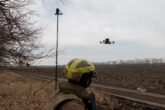March 07, 2018
Lessons for the Navy from SpaceX and the Commercial Sector
The United States Navy has a goal of increasing its fleet from its current inventory of 280 ships to 355, but its recently released 30-year shipbuilding plan does not reach that goal until the 2050s. This is despite the fact that the recently released national-security strategy publicly recognizes that the United States is now in a great-power competition with China and Russia. In addition, China’s investments in its own navy will enable it to surpass the U.S. Navy in size within the next decade; China may supplant the United States as the most influential nation on the global scene shortly after that. If the United States is to maintain its role as the key player, it will have to make changes in the way it approaches building and maintaining instruments of national power. Fortunately, there are some good examples of how to do this.
Just over a decade ago, the U.S. government engaged in a public-private partnership with Elon Musk’s fledgling space-launch company, SpaceX, to create a hybrid company that paired private capital with government funds. In the beginning, with the Space Shuttle program approaching its end, the partnership aimed to find an affordable method for launching resupply missions to the International Space Station. As the program matured, however, it became something much greater: a commercial business that overcame massive infrastructure costs to become a core part of the nation’s launch enterprise, all within the space of a decade.
Read the full article in National Review.
More from CNAS
-
Defense / Transatlantic Security
When Defense Becomes Destruction: Austria-Hungary’s Mistake and Ukraine’s RiskThis article was originally posted on War on the Rocks. The southeastern Polish city of Przemyśl, with its elegant 19th century Habsburg-era train station, remains one of the ...
By Franz-Stefan Gady
-
Defense / Transatlantic Security
Ukraine’s Catch-22 MomentThis article was originally published in the Financial Times. In Joseph Heller’s wartime classic, Catch-22, the protagonist Yossarian seeks out the US army surgeon Doc Daneeka...
By Franz-Stefan Gady
-
CNAS Insights | Budgetary Own Goals Undermine “Speed and Volume”
On November 7, Secretary of Defense Pete Hegseth laid out a plan to overhaul the Department of Defense’s (DOD’s) acquisition system. Placing an emphasis on delivering new capa...
By Philip Sheers, Carlton Haelig & Stacie Pettyjohn
-
Drones: Who Is Making the New Weapons of War?
From Ukraine and Russia to Gaza and Sudan, drones have become a key weapon of war. Which companies are making them, and profiting from this rapidly expanding but controversial...
By Stacie Pettyjohn




